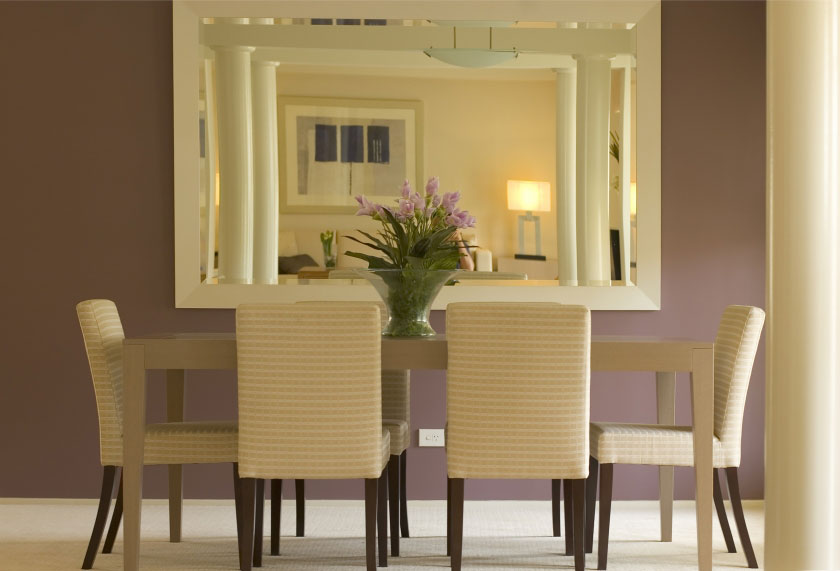Staging
If you are about to sell your house in today’s market, you might want to look at “staging,” a method of preparing your home for sale to make the best impression on potential purchasers. It not only can sell your home, but also can help you get you up to 20% more for your property.
So you won’t mind that it involves cleaning and de-cluttering and tidying and organizing — whew, I’m exhausted already. But that elbow grease can potentially translate into thousands of dollars. Staging is done strictly to sell the house, because the way you sell your house and the way you live in it are two separate things.
Unlike decorating, staging costs a fraction of the price. You’re not spending hours picking out fabrics, you’re really just redesigning. Decorating is personalizing a home, and usually, you have a budget to work with, and you add things to the home. Staging is just the opposite — you’re taking things away, depersonalizing, so a buyer can see the space. It’s about selling the space, not decorating it.
If extra furniture is needed, it can be rented by the ‘Stager’ at an extra cost to the homeowner. Furnishing to some degree helps considerably as empty houses are very difficult to sell. Realistic furniture is used, the kind that most people use in their own home.
Stagers give a perspective of space and a warm welcome, so a purchaser will think, “I’d like to live here.” Staging makes it easier for the buyer to picture himself living in the home. But what exactly does a Stager do? Tackles the three deadly sins of sellers. These are:
1) Personal Items
Too many personal items or too many pictures displayed on a desk can be a big problem. It’s more important for the purchaser to look at beautiful corners, mouldings, plantation shutters and wood floors. If you’re selling, your favourite Teddy will have to go — not to mention photos of Mom, Dad, kids, Jasper the cat, etc., etc.
All books and magazines also have to go. Empty your bookshelves. Potential purchasers always look in the medicine cabinet, so remove personal items. Religious items should also be put away including crosses hung on the walls or sitting on a dresser in the bedroom.
2) Clutter
Most clutter should be packed away and stored neatly. Homes with too much ‘stuff’ don’t sell quickly. All clothes must be put away because Buyers will check the closets. If there isn’t enough room in the drawers and closets, the answer is to store it all short-term. For example, all Canadian Self Storage will come to your home and take your boxes away. In the kitchen, make sure your dishes are done. The idea is for the purchasers to see that there is room for them to move in.
3) Cleanliness
Cleanliness sells. In real estate, we say: “If you can smell it, you can’t sell it.” Get rid of the dog, cat, bird, whatever, and all signs of it. If your Agent is having an open house, take the animal with you, and get rid of the litter box. In reality, nobody wants to move into a house where an animal lived, even if they’re animal lovers themselves.
And if you’re a smoker, try to get rid of the smell, as well as the evidence, i.e., ashtrays.
Cooking odours are another faux pas.
If possible, clean any carpet before listing your home for sale. It will help get rid of cigarette and cooking odours. It’s also a good idea to watch what you’re cooking for a while, and stay away from foods with lingering odours.
To make it easier on yourself during the selling period, try confining your living space to one area of the home, and an absolute must is … make the beds everyday in case of last minute showings!
Don’t forget curb appeal. The first impression is vital. If they don’t like it outside, you won’t get them inside. In winter, remove snow from walkways and the laneway. In summer, ensure your grass is cut, the hedge trimmed and the flowers are blooming.
Why hire a Stager, you might ask, when you can do it yourself. Because a Stager has no emotional attachment to your home, and is able to see it from the purchaser’s perspective.
Sometimes people think when you’ve staged your home, that you’re pulling the wool over the eyes of Buyers. But that’s not so. A staged home is a clean home that looks great and is screaming, ‘I’m ready for you to move in.’ It is then so much easier for the Seller to make the emotional cut that they can’t do when they’re living in the home.
After staging, it is common for the owner to come home and say: ‘This is not my home anymore.’ The house can now be sold and it can help you get a good start to move on.



